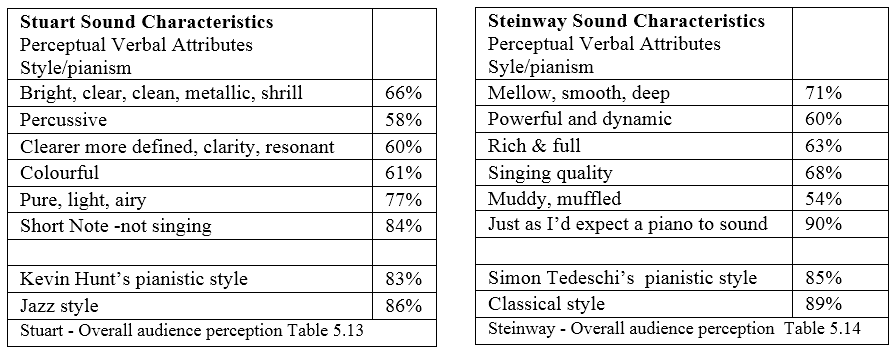an overall perception of audience timbre identification. The attributes that produced useful differential responses in answers to survey questions were also tallied for their frequency of use in the written comments. A perception was established when it was found that a verbal attribute was used in over 50% of responses to describe one piano sound, that also was used in under 50% of responses to describe the other piano sound. If a participant described both piano sounds with the same attribute, the double evaluation created a 50% – 50% evaluation, equal with no difference in the percentage. Such a response was not regarded as an audience perception for the compiling purpose of this study, because in that instance, the verbal attribute isn’t attributed to one piano sound more favourably than the other.
The audience perception percentage results listed below were compiled and averaged across the audience responses of all six concerts. The percentages are all of the above 50% differential, each percentage having a corresponding below 50%, for the other piano sound. Attributes with similar associations to a type of timbre, are grouped in this summary to observe a general perceptual result of tone colour.

The averaged percentages above define the overall perceptions of all 6 concerts. The Steinway sound was generally perceived to be more ‘powerful’, ‘mellow’, ‘rich and full’, with a ‘singing tone’, and ‘just as is expected in a piano sound’, and the Stuart sound was perceived to be ‘lighter’, ‘brighter’, more ‘colourful’, with less of a ‘singing quality’, though with more ‘definition’ than the Steinway sound. These perceptions are discussed in detail in the following section, examining responses to specific questions at particular survey-concerts with audio extracts from the concerts.




